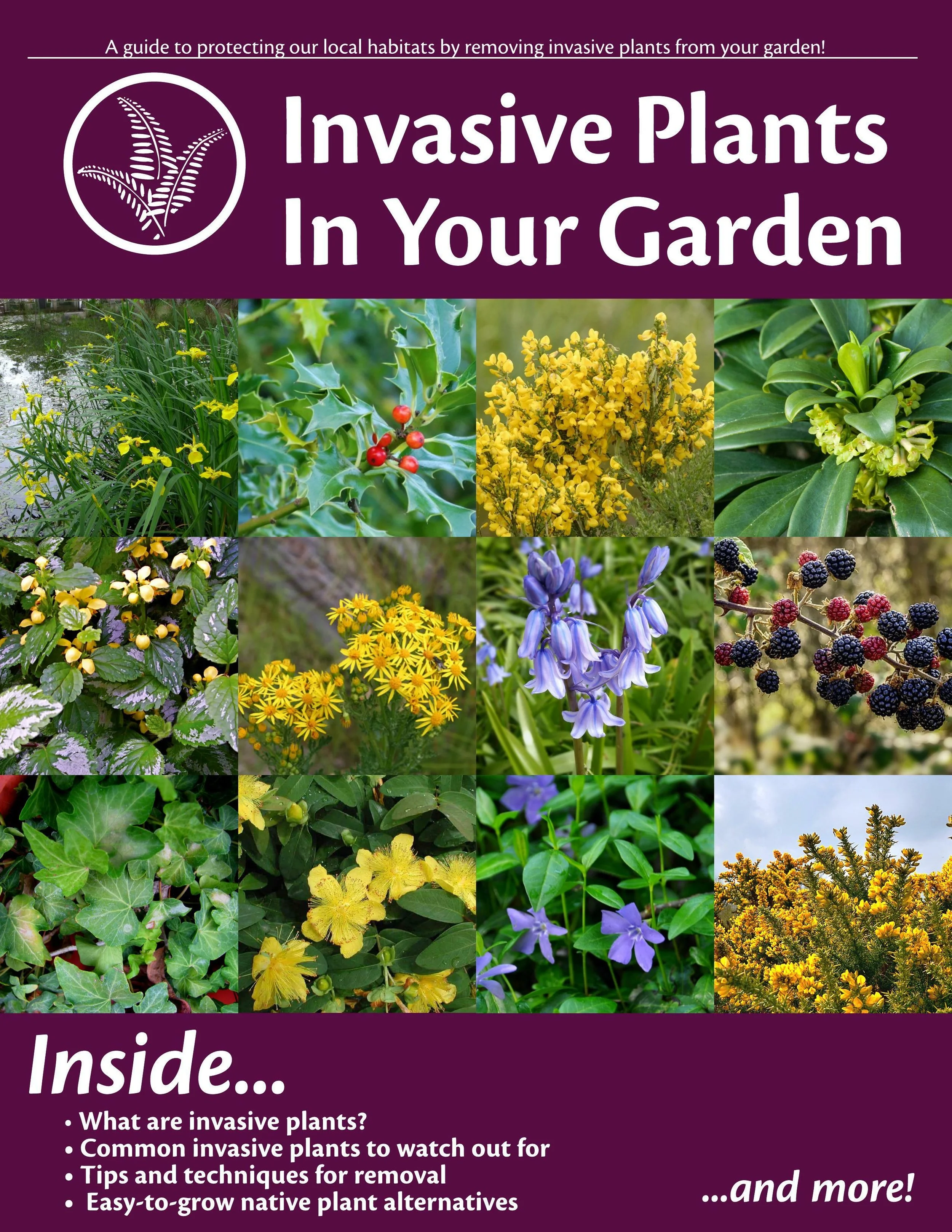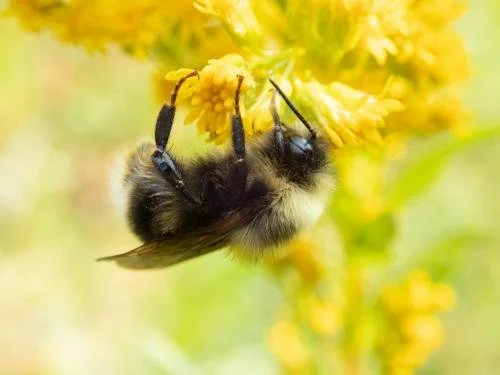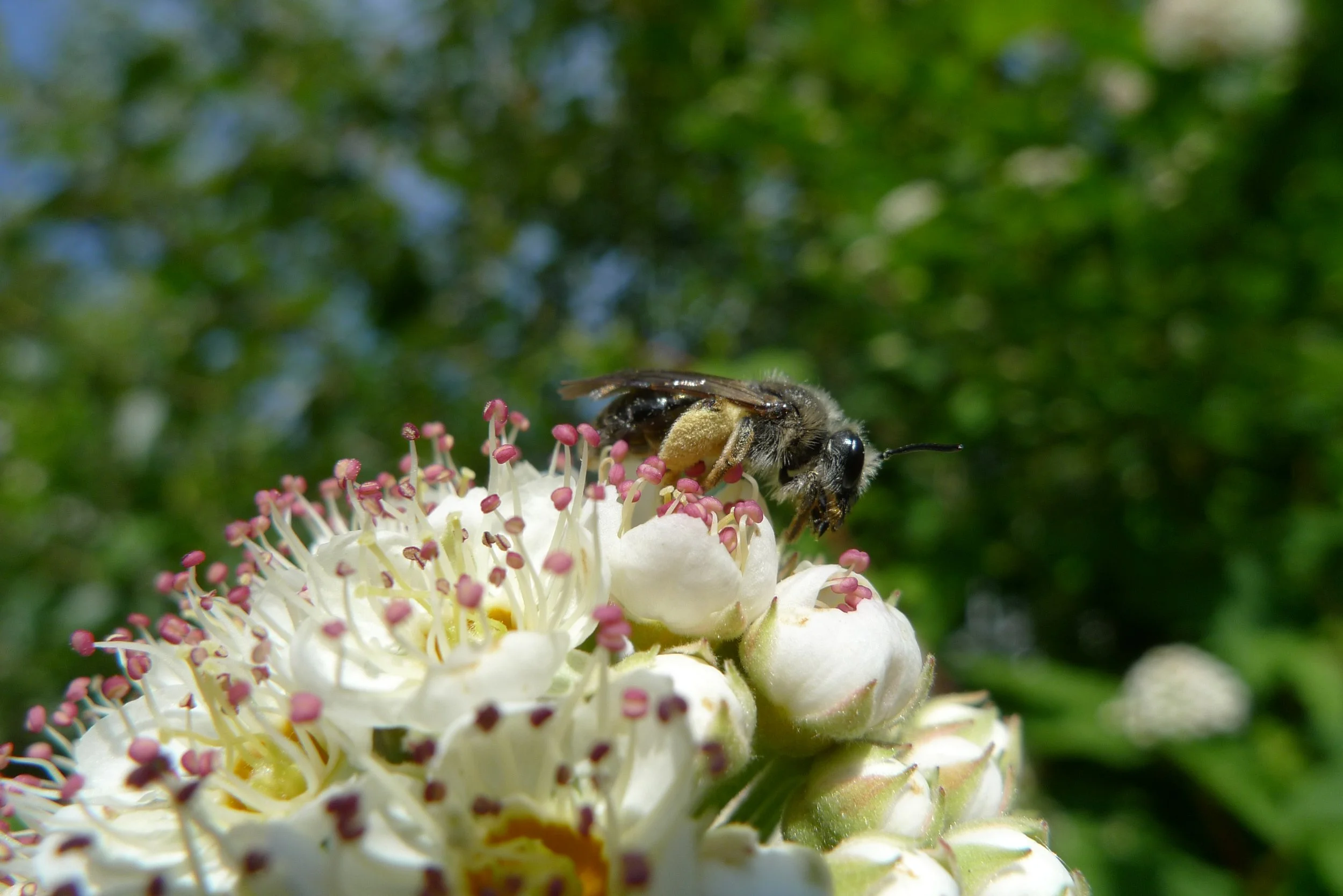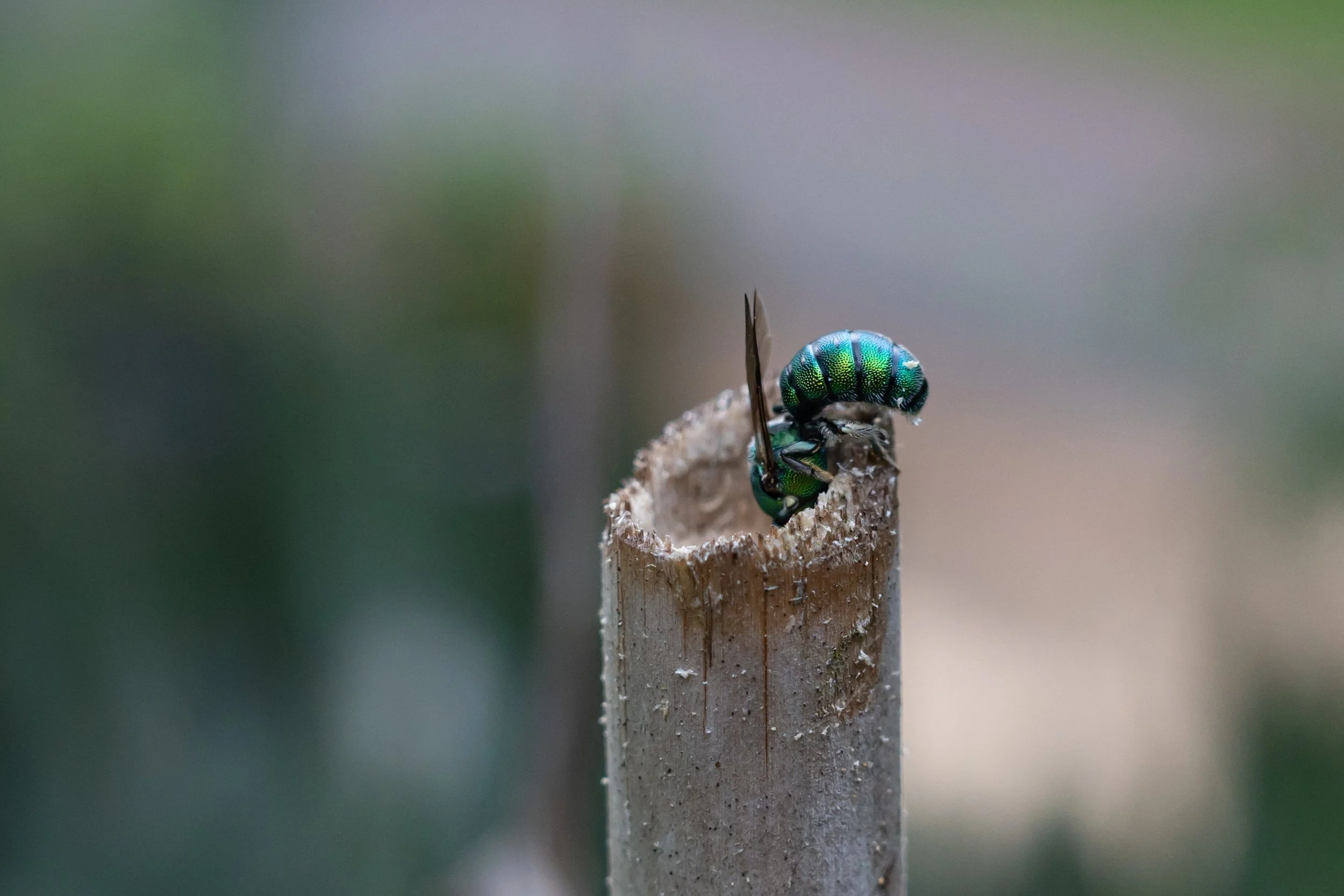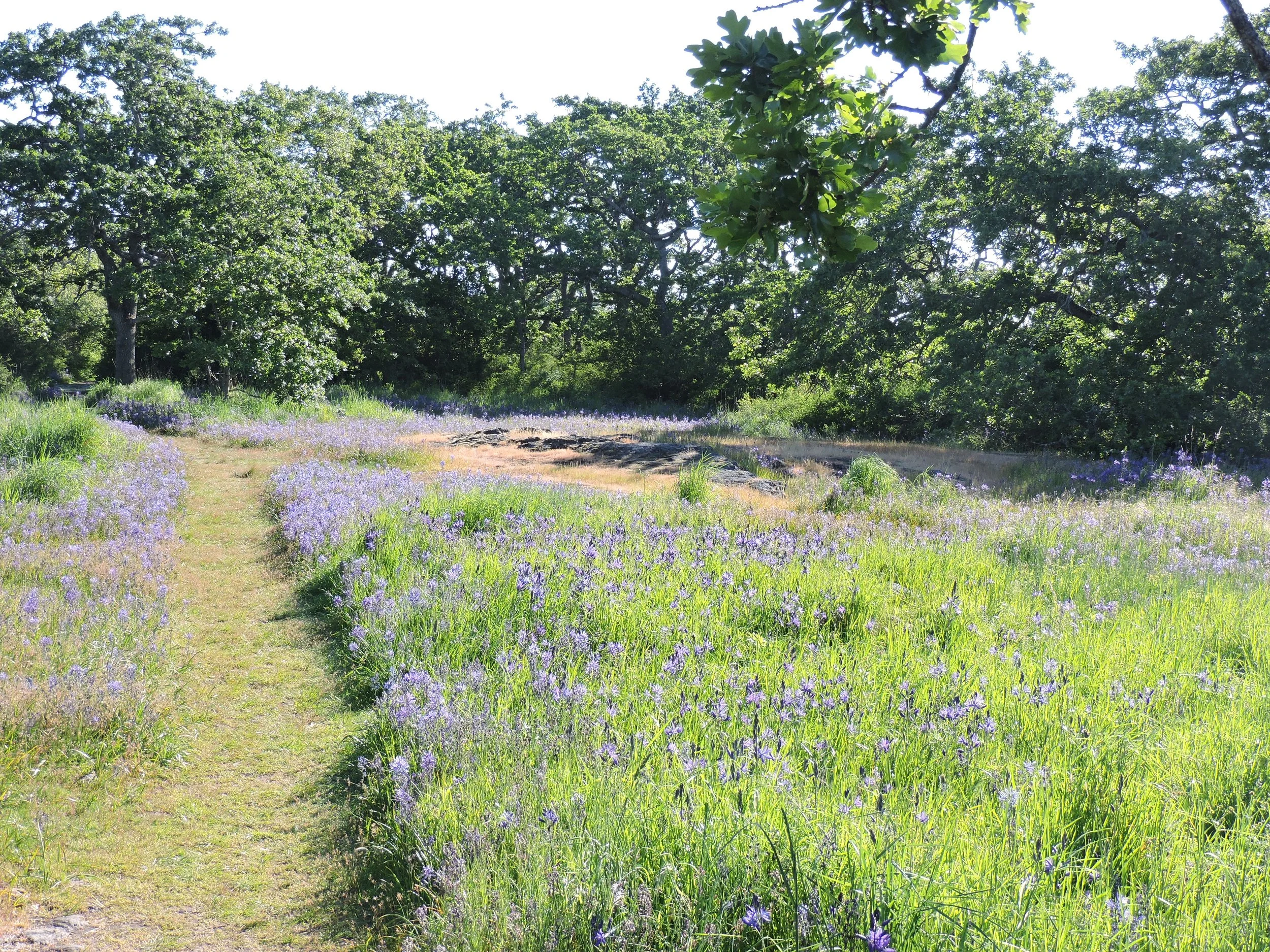
Creating a Pollinator-Friendly Space
What?
A pollinator is an animal that helps many plants reproduce through pollination. Bees, birds, butterflies, wasps, beetles, flies, and moths pollinate plants around the world. Although no bats in British Columbia are pollinators, further toward the equator, bats are responsible for pollinating plants like agave, cocoa, mangoes, and bananas.
Worldwide there are 20,000-30,000 bee species. British Columbia is host to 450 species of bees alone. Each pollinator has specified unique plants that it can pollinate best! Take a look in further detail below.
Threats
Unfortunately, pollinators are under great threat. Habitat loss, insecticides, the spread of disease and invasive species are all contributing to the decline of pollinator species.
To paint a picture, Western Bumblebee, Bombus occidentalis, was once a common species to BC, but because of the impact of these major threats, their numbers have dwindled significantly in recent years. In 2014 COSEWIC designated the Western Bumblebee as Threatened.
(Photo: Xerces Society / Rich Hatfield)

What you can do
Protect and Restore Natural Habitat
By protecting and restoring natural habitat, more habitat is created for this wonderful group of animals. Protecting habitat includes reserving natural spaces for pollinators. This means not developing it, leaving the flowers and letting the grass grow long. Restoring natural habitat also includes removing invasive species and planting native species. This will help to enhance biodiversity and promote more habitat for our pollinator friends.
Refuse Pesticides
Leave the pest catching to the birds and the bats! Although a simple solution, pesticides can be devastating to beneficial insect populations.
Protect Bee Homes
Some bees like to make their homes in fallen trees and leaves on the ground. Twigs, stumps, logs, and other debris make great homes for solitary bees. In order to give them a helping hand, consider leaving these types of garden materials on the ground, not clearing them away.
Similarly, protecting clean drinking water for bees and other pollinators goes a long way in helping them as well. Consider putting out shallow dishes of clean water during the summer. This allows them to take a rest from the sun and refresh themselves.
Leave the Bare Ground for Bees to Nest
Some bees like to nest in the mud. By leaving exposed patches of dirt around your property, you can help these bees find appropriate areas to dig their homes.
Remove Invasive Plants
Invasive plants have the unfortunate ability to wipe out the diversity that we strive for in natural ecosystems. By removing your invasive plants and replacing them with native species, you can help to promote diversity on your own property. Diversity in plant species is essential to helping pollinators. They rely on a diversity of plant species that bloom throughout the year, in order to be succesful.
Planting Bee-Friendly Plants
-
Planting by Colour
Pollinators are attracted to all different kids of bloom colours. Bees tend to prefer bright white, yellow, or blue flowers. For hummingbirds, plant with reds, oranges, and whites. Beetles have been known to enjoy white or green.

-
Bloom Year Round
By ensuring a bloom during each month that the pollinators are flying around, you can help them to thrive all year. From February to October, a steady bloom of a diversity of plants can provide the pollinators with plenty of pollen to help them do their jobs.
-
The More the Merrier
Planting native plants in large patches, no less than one square meter, means that the pollinators do not have to travel as far between plants. Planting in a diversity of shapes and sizes also encourages a diversity of pollinators to fly by your patch.

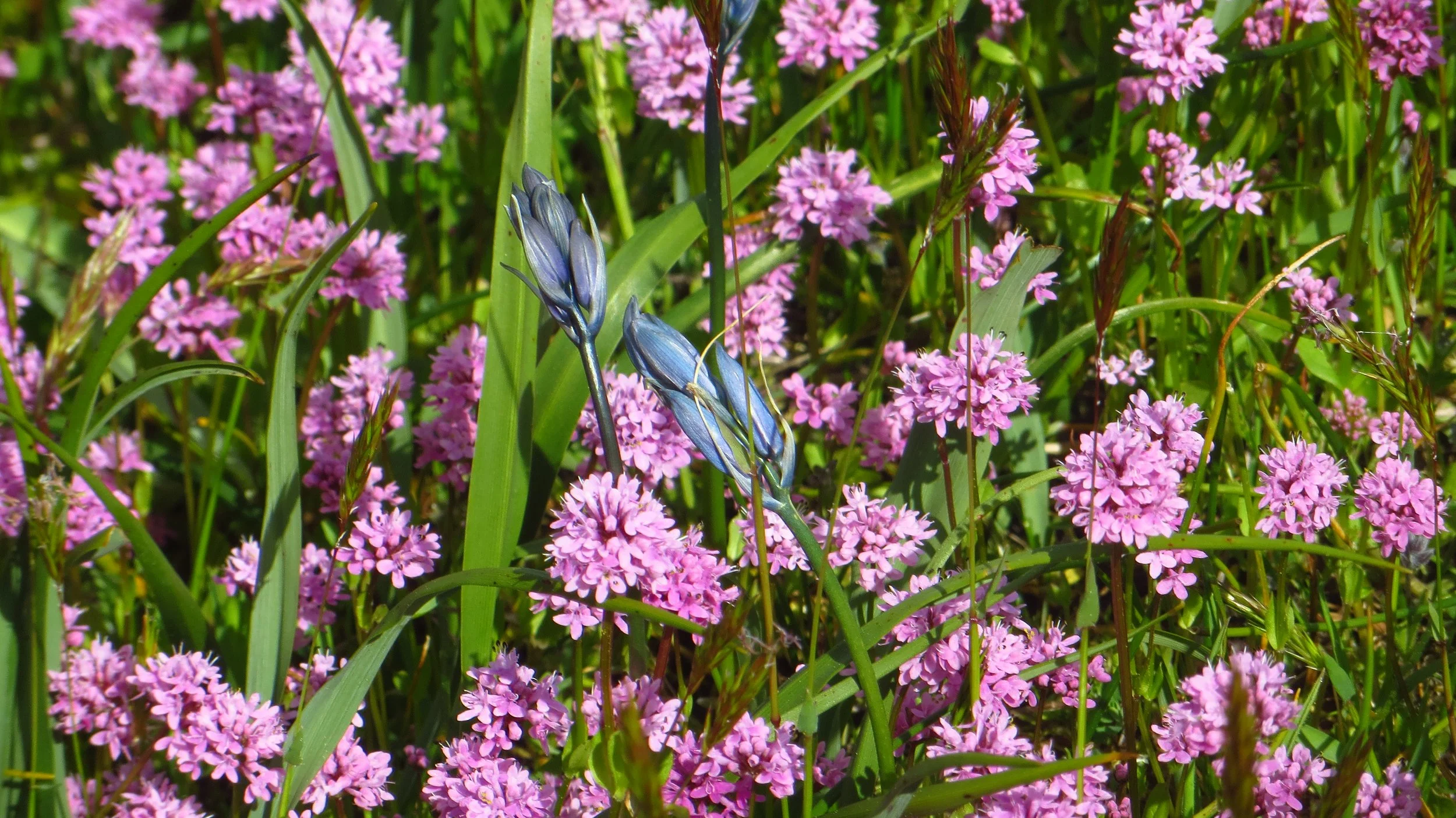
Making Bee-Friendly Habitat
Building Bee Homes
Cavity-nesting, solitary bees like Leafcutters and Mason Bees naturally live in beetle holes in wood or hollow plant stems like twigs of Elderberry bush (Sambucus racemosa or caerulea). Leaving logs and standing dead trees on your property benefits these bees. Mason Bees become active in early March and will pollinate plants within 90 meters of their cavity. Blue Orchard Mason Bees (Osmia lignaria) appear like flies to many because of their size and bluish black colour.
Unconventional Nesting Spots
Bumble Bees commonly nest in abandoned rodent burrows. Kindly leave some holes in the ground for them to call home. Some nest wherever they find insulating material like a compost pile.
Carpenter Bees enjoy nesting in hollow sticks and stems. Consider leaving dead twigs and stems around your property, instead of cleaning them up in the fall.
Mining Bees are solitary ground nesters, who will burrow into well-drained soil to make their homes.
Planting Butterfly-Friendly Plants
Butterflies are pollinators too!
A Few Butterfly Host Plants
| Butterfly | Plant |
|---|---|
| Anise Swallowtail | Spring Gold, Lomatium utriculatum, Barestem Desert Parsley, , Cow Parsnip, Fennel, |
| Woodland Skipper | Native Grasses |
| Two-Banded Checkered Skipper | Native and Non-Native Grasses |
| Clodius Parnassian | Western Bleeding Heart |
| Western Tiger Swallowtail | Oceanspray, Holodiscus discolor, Saskatoon Berry, Willow, Salix spp., Birch, Bitter Cherry |
| Pale Swallowtail | Oceanspray, Holodiscus discolor, Alder, Cherry, Ceanothus |
| Pine White Douglas | Pine Species, Fir Species, Hemlock Species |
| Western Elfin | Labrador Tea, Salal, Arbutus, Kinnickinick, Manzanita |
| Spring Azure | Spiraea, Oceanspray, Dogwood, Viburnum, Cherry, Ceanothus |
| Painted Lady | Native thistles, Mallows, Wooly Sunflower, Lupines, Pearly Everlasting, Borage |
| Lorquins Admiral | Oceanspray, Saskatoon Berry, Willow, Poplar |
| Red Armiral | Stinging Nettles |
| West Coast Lady | Stinging Nettles, Mallows |
| Mourning Cloak | Willows |
| Common Wood Nymph | Native and Non-Native Grasses |
A Few Butterfly Nectar Plants
| Plant | Bloomtime | Colour |
|---|---|---|
| Common Camas, Camassia quamash | April to June | Purple and Blue |
| Thimbleberry, Rubus parviflorus | May to July | White to Cream |
| Red-Osier Dogwood, Cornus stolonifera | April to June | White to Cream |
| Sea Blush, Plectritis congesta | March to June | White to Pink |
| Broad-Leaved Stonecrop, Sedum spathulifolium | March to June | Yellow |
| Saskatoon Berry, Amelanchier alnifolia | April to July | White |
| Wild Strawberry | July | White |
| Hookers Onion, Allium acuminatum | May to June | Pink and Purple |
| Harvest Brodilea, Brodiaea coronaria | July to September | Blue and Purple |
| Spring Gold, Lomatium utriculatum | February to June | Yellow |
| Self-heal, Prunella vulgaris ssp. lanceolata | May to September | Purple |
| Douglas' Aster, Symphyotrichum subspicatum | July to September | Yellow and Purple |

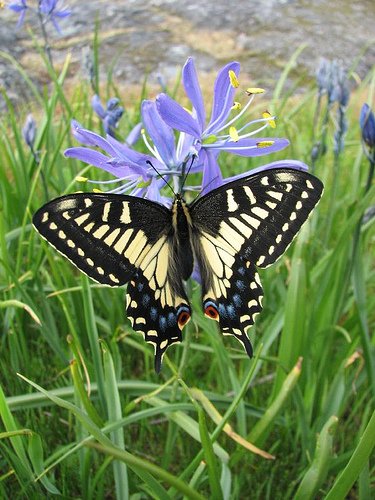
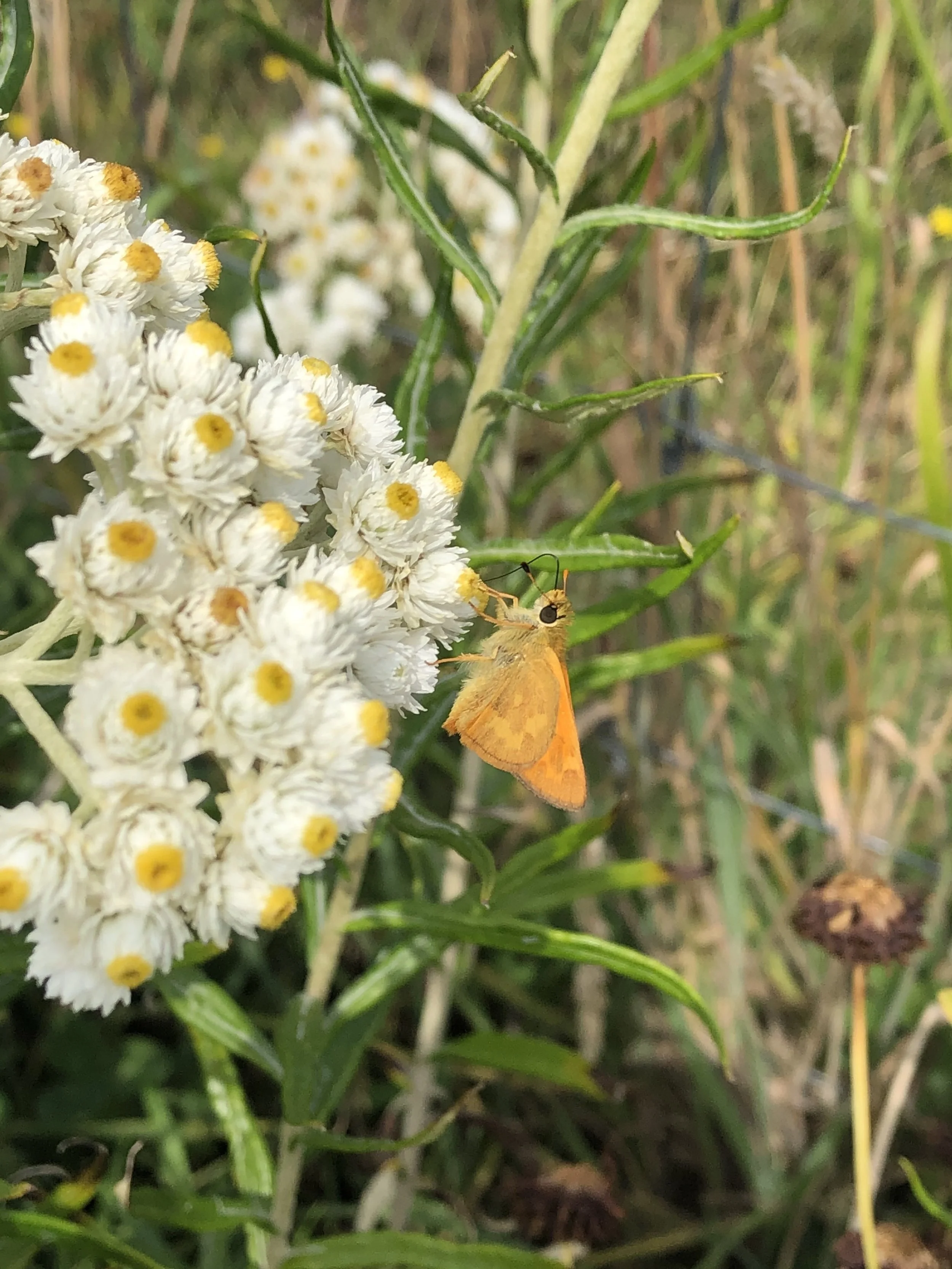

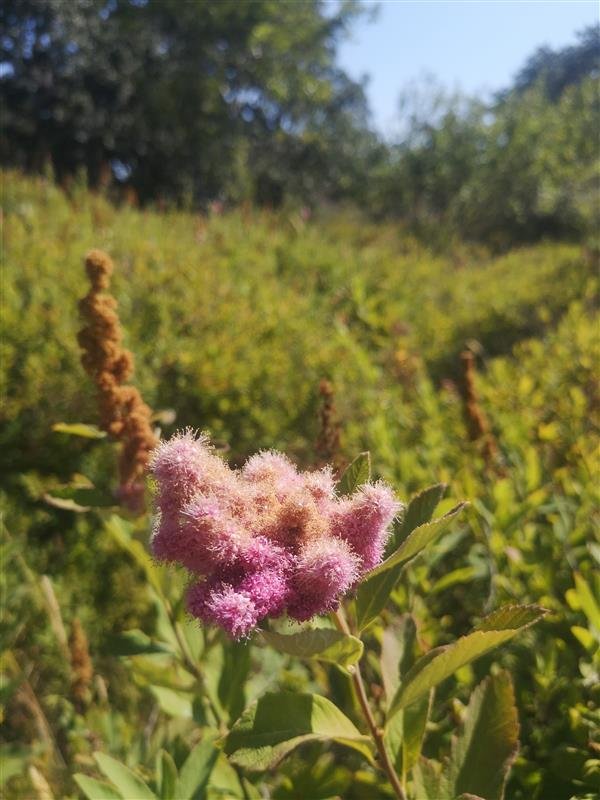
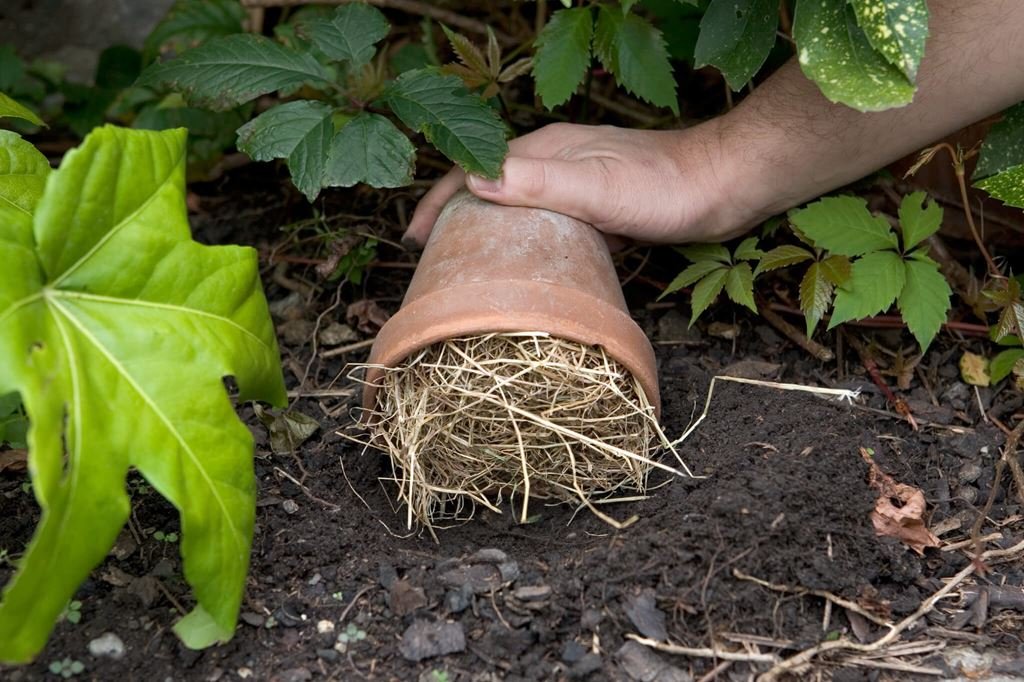

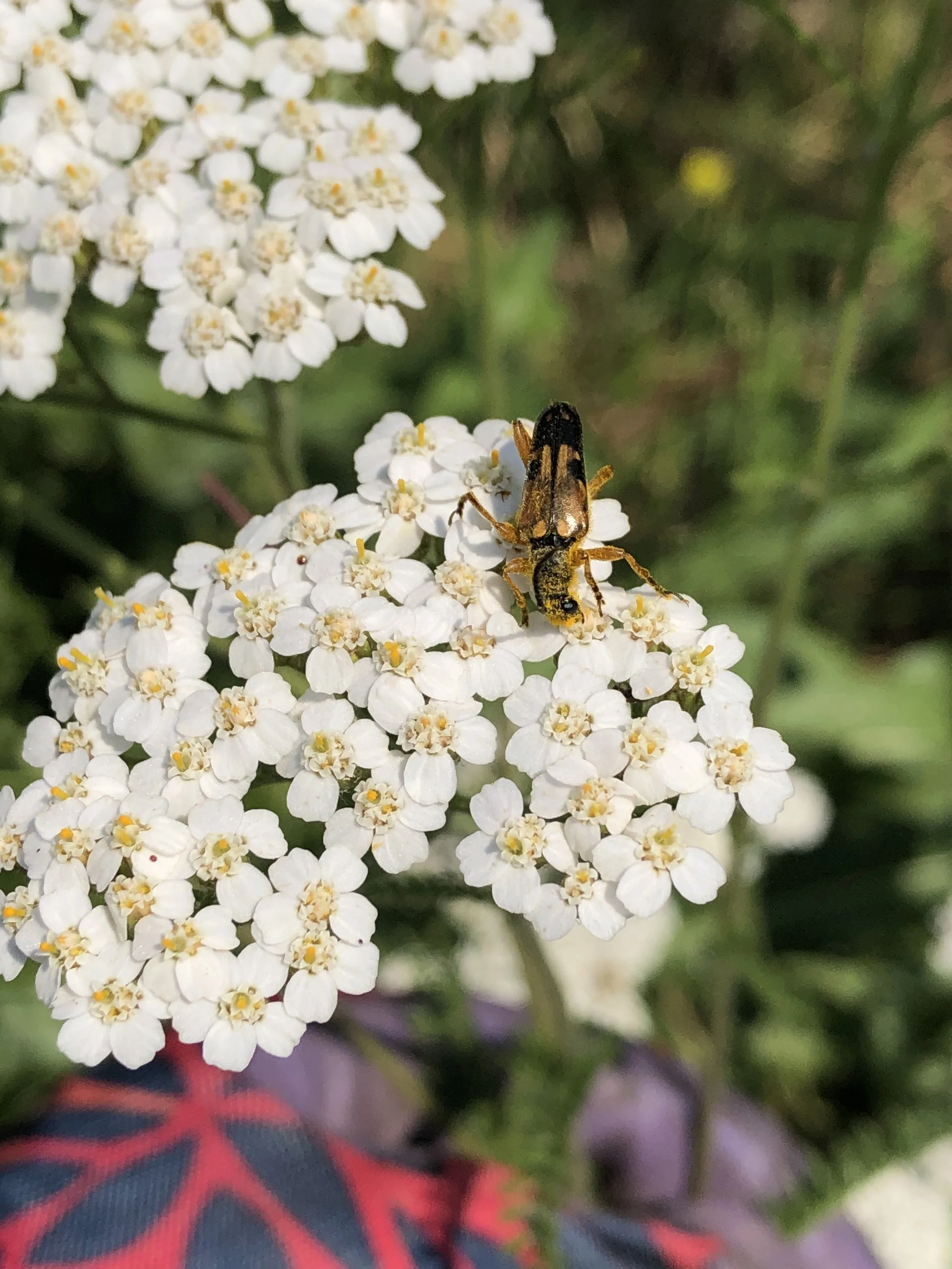
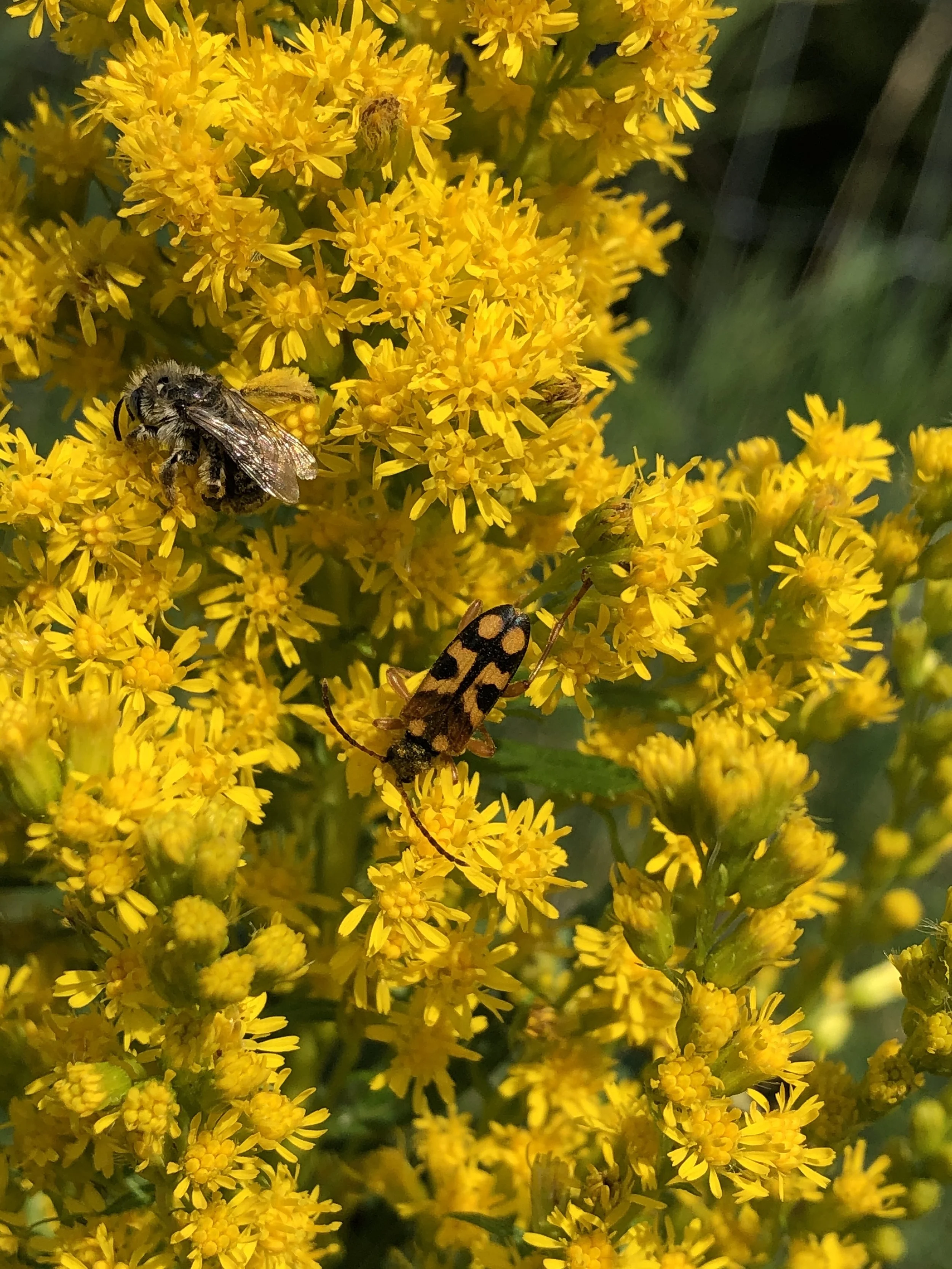
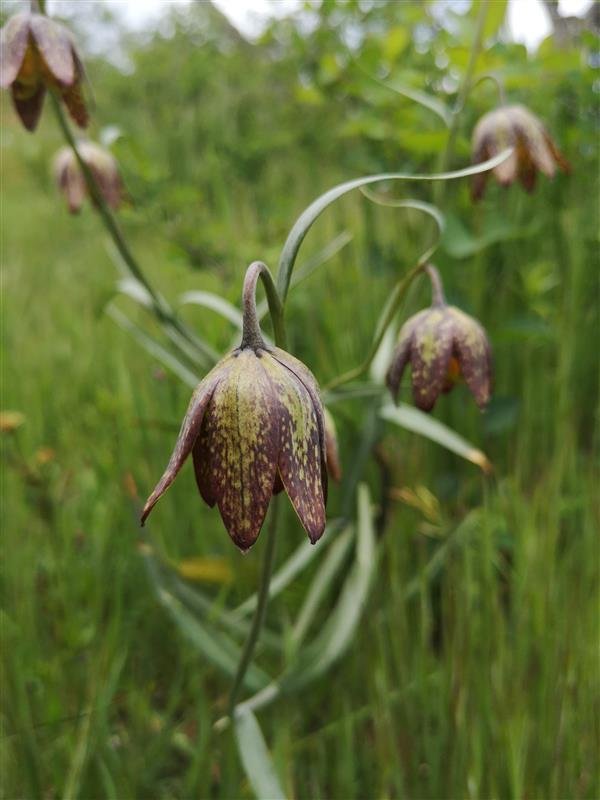
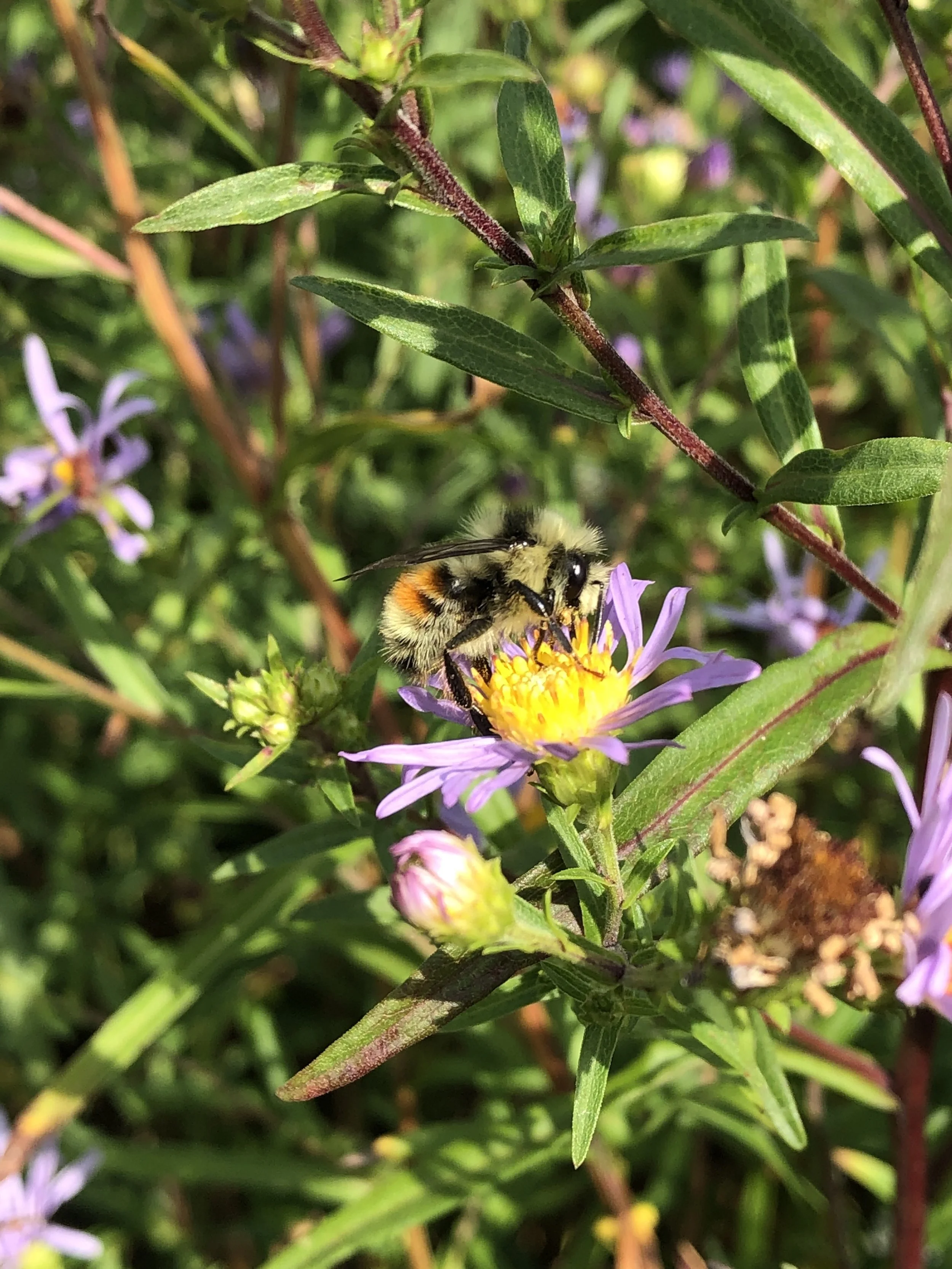
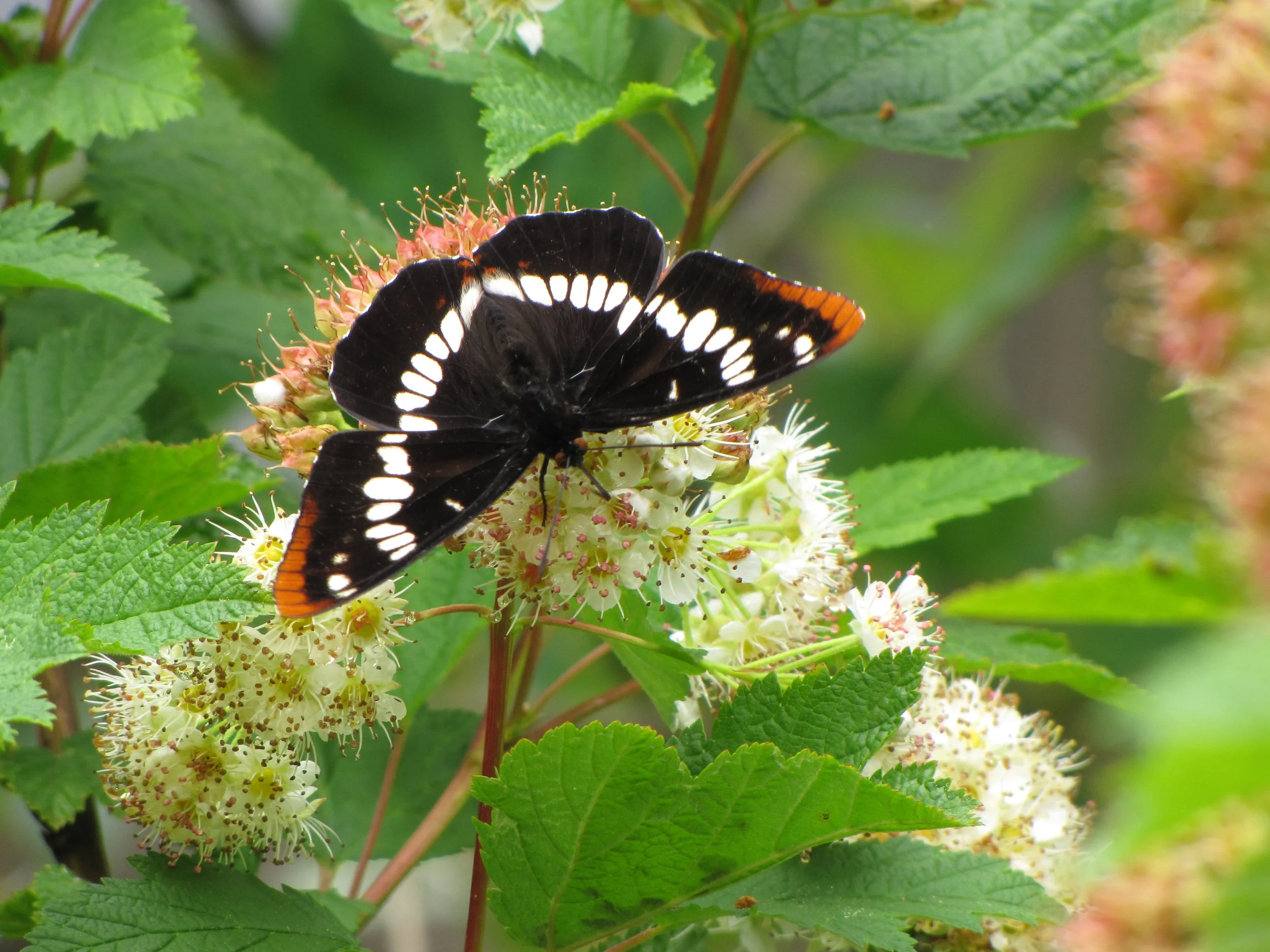

Learn More with Our Stewardship Guides
-
Native Plants

-
Pollinators

-
Invasive Plants
